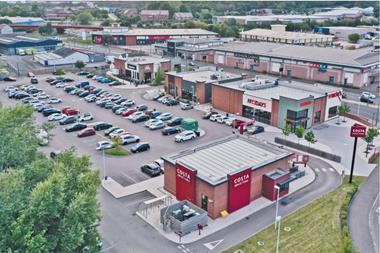Aviva Investors is not currently investing in build-to-rent (BTR) as it “doesn’t meet an investor need”, according to Aviva Investors head of UK real estate research Tom Goodwin.

Aviva Investors is not currently investing in build-to-rent (BTR) as it “doesn’t meet an investor need”, according to Aviva Investors head of UK real estate research Tom Goodwin.
In an exclusive Investment Property Forum podcast for Property Week, Goodwin questioned whether the pricing has been appropriate in some multi-family and high residential blocks developed in recent years, when structural and demographic factors were more favourable for single-family mid-market housing.
“Any product development or addition to the portfolio is driven by underlying investor need – and for us, at the moment, multi-family or private residential blocks don’t meet an investor need,” he said.
His comments were made as the panel, which included IPF research director Pam Craddock and Real Estate Strategies founder Malcolm Frodsham, argued that from an institutional perspective investors were more interested in “letting to a family who will want a degree of certainty in their tenure”.
Craddock said: “Broadly speaking and this may be only anecdotal, but they look after their property better than maybe if you have a transient population of students or young professionals coming in and out and moving through a city. Is multi-family part of the future for institutional residential exposure?”
All three involved in the panel debate, which was chaired by Andrew Teacher, managing director of consultancy firm Blackstock, voiced scepticism about the market’s current growth assumptions for industrial assets, arguing that the diverse range of properties in the sector made forecasting difficult.
“We need to look at the forecast and say: ‘What do I believe is actually happening here?’” said Frodsham. “What Tom is basically saying is there was industrial rental growth over the last five years, but are people just extrapolating? It’s a very common trap to fall into.”
The panel identified industrial assets as the type of properties least constrained in terms of development, although planning issues and lack of available labour did present barriers.
The IPF recently commissioned work to look at structural change in retail and how ecommerce was eating into traditional retailers’ share of the market in order to understand how investors might change their sector allocations in response.
Goodwin said that investors were increasingly pricing alternative uses into asset valuations. In particular, this related to retail asset values, which Frodsham predicted could fall further at the start of next year. “Put Q1 2019 in your diary, as that’s when retail will hit its nadir,” he said.
However, he added, this was “only one view of the world” and “you can picture a scenario that is quite positive; you can say these retailers will survive and online retailers are not actually making that much profit; a lot of them make a loss”.
































2 Readers' comments